Alterations in how people perceive themselves and the world around them, being a part of the cultural change, are inherently tied to a greater range of factors lying outside of the culture spectrum. Namely, political, economic, technological, and environmental changes play a massive role in cultural development and in shaping people’s perceptions of themselves and others. The 60s and 70s in American culture exemplify the described trend quite accurately. A series of changes in the foreign policy of the U.S. and the resulting shift in society’s idea of political and economic relationships defined the rise in the influence of leftist movements and the following dominance of the hippie culture (Gooden & Myers, 2018). (see Fig. 1). Since the hippie movement was influenced heavily by Marxist and leftist ideas, the perception of women shifted from the rigid traditionalism of a patriarchal perspective to a much more flexible concept enhanced by the premise of gender equality.
Along with alterations in the perception of women’s role within the community, the image of a woman also experienced significant changes, which fashion innovations of the 60s and 70s demonstrate quite accurately. Featuring significantly looser and brighter clothes, the fashion of the 60s and 70s challenged the relentless gender normativity of the previous decades, allowing for looser clothes in female fashion and, thus, introducing a new concept of femininity.
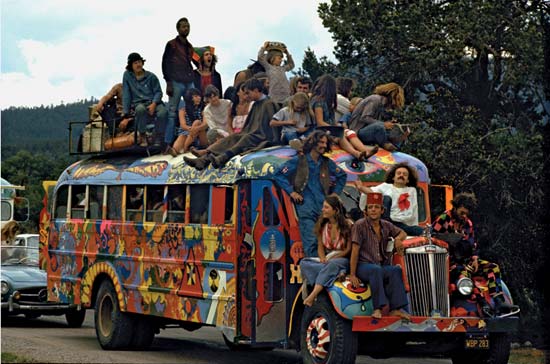
Remarkably, the changes observed in female fashion did not suggest pivoting away from the previously accepted concept of ladylike femininity in clothing. Instead, new elements that cautiously subverted the traditional perception of a woman were introduced to the preexisting fashion trends. For instance, dresses were still popular, most of them taking influences from their 50s predecessors in their outlines. Moreover, dresses became shorter, which, from the Feminist Theory perspective and, particularly, the concept of the male gaze, did not suggest a significant improvement of how women were perceived (see Fig. 2). Nonetheless, the 60s clothes implied greater variety and often featured the silhouettes that were deprived of the traditional shape expected to emphasize the outlines of a female body. Instead, straight silhouettes of contoured sheath dress that would border an androgynous look were rapidly introduced into the fashion spotlight, garnering attention and praise from customers and critics alike (see Fig. 3). The observed change aligned with the shifting perspective of women’s role within a family and, by extension, American society.
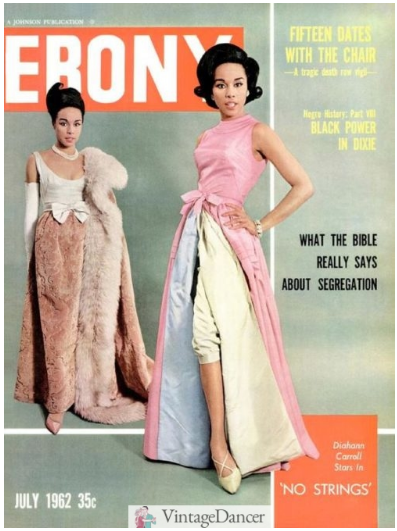
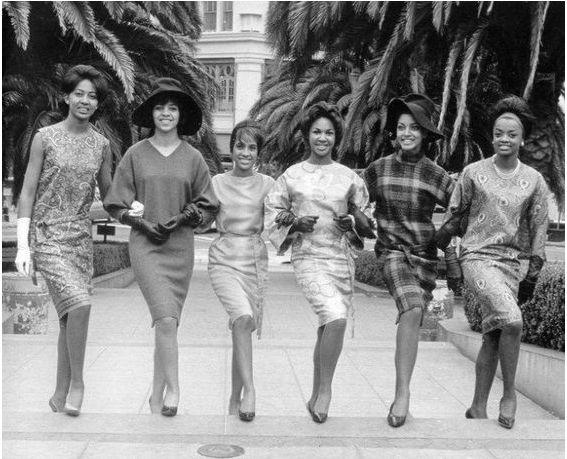
However, when considering the pivotal change that allowed for a tremendous breakthrough and represented the shift in women’s fashion, thus reflecting the transition to a more egalitarian community, was the introduction of an item as basic as trousers into women’s wardrobes. By actively promoting trousers as unisex clothes that could belong to a women’s wardrobe as well as the men’s one, the fashion industry reflected the societal change observed in the U.S. in the 60s (Pöllath, 2018) (see Fig. 4). While trousers were no a new item in the range of women’s clothes in the 60s, the first case of a woman wearing them occurred in the late 19th century, it was not until the mid-20th century that the specified piece of clothing finally made its way into the popular culture (see Fig. 5). The observed change could be seen as the direct effect of the influence of the leftist movement and the hippie movement that took American society by storm in the 60s. As a result, although the influence of the specified social trends subsided in the 70s, with the American community everting back to traditional values and ideas, the concept of female empowerment and the resulting shift in fashion choices retained its grounds.
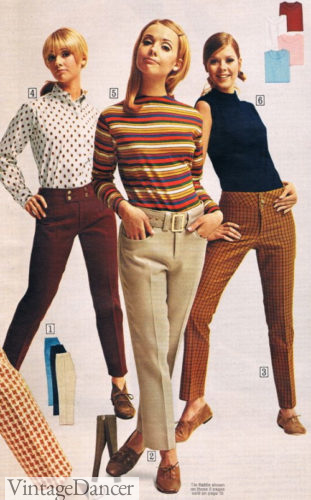
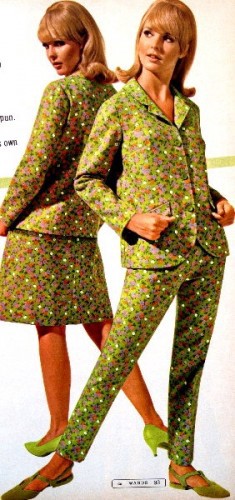
However, while the massive opposition to capitalist values and the emphasis on fighting the establishment pioneered in the 60s had tremendous power and influence, shaping popular culture in America, the inevitable response to the failures of the movement defined the further social permutations (Jony et al., 2017). Nonetheless, the focus on female empowerment and the fight for women’s rights appeared to have a much stronger staying power than one might have expected at the time. As a result, a range of fashion choices made in the 60s was carried further into the 70s, cementing the change in the perception of women and promoting their independence and agency (Chinn, 2020). Although the psychedelic color scheme was no longer represented in women’s clothing, the general effort of minimizing the impact of sexist preconceptions on women’s clothes was visible (see Fig. 7 and Fig. 8). For instance, the outlines of the clothes underwent significant changes compared to the 60s, featuring a significantly less sexualized image. Specifically, the emergence of flare jean and similar items of clothing signaled the transition to a new perception of women (see Fig. 6). As the image below exemplifies, the transition from tight-fitting clothes toward looser ones was quite noticeable (see Fig. 8).
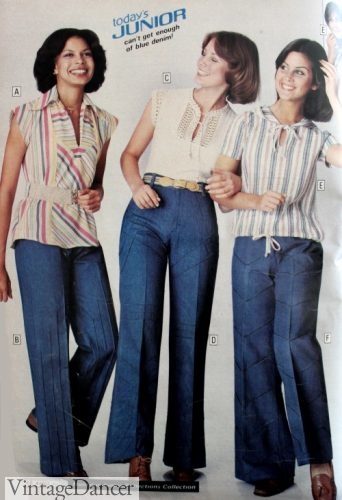
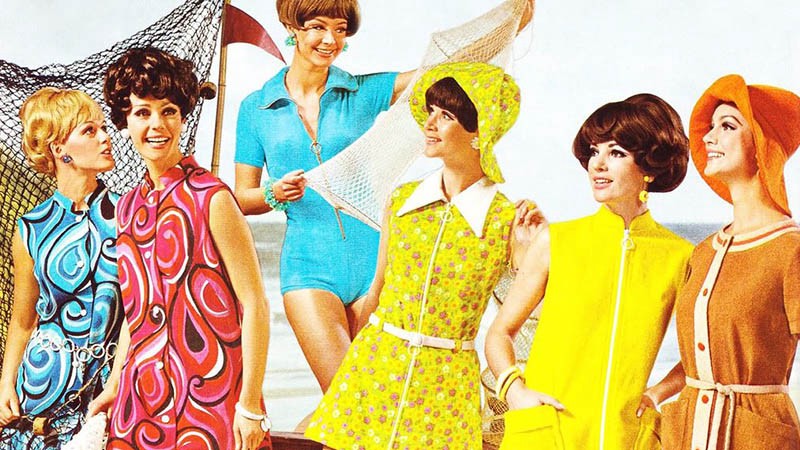
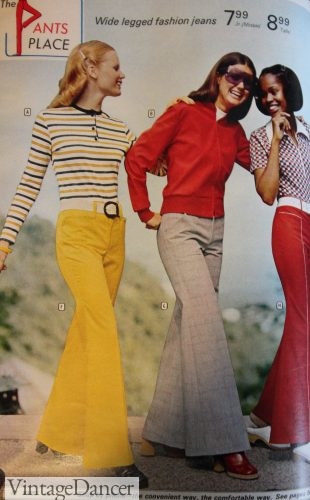
At the same time, the fashion industry was struggling to keep the opportunity to objectify women’s bodies through fashion design choices. Specifically, the emergence of new trends geared toward the liberation of women coexisted with the presence of sexualized images, particularly, the introduction one of the most revolutionary items, the mini skirt (see Fig. 9). Arguably, the observed phenomenon was the product of collision of female liberation and the promotion of hedonism as the core philosophy of the hippie movement (Duque, 2019). Thus, arguably, even the specified change in women’s fashion reflected societal trends, which were widely represented by the female liberation movement that gained increasingly large traction within American society (McMillon, 2018). Therefore, the sociocultural and sociopolitical trends in American society defined shifts within the fashion industry, informing the choices that designers made to reflect new cultural trends (see Fig. 10).
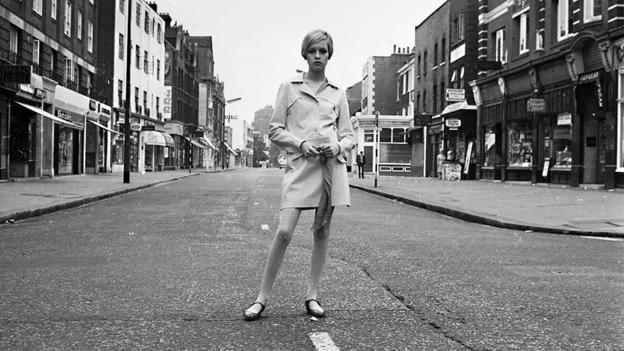
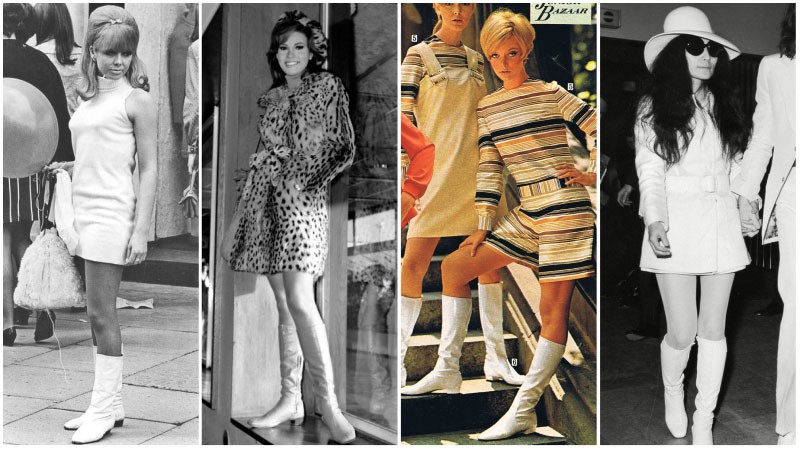
Finally, as the images below exemplify, the focus on female empowerment and the promotion of employment in women was also reflected extensively in female fashion. Specifically, the development of formal attires, including office suits for women, was a remarkable change worth noting as one of the principal alterations in women’s fashion over the two decades. Therefore, along with the perception of women, their public image changed significantly, altering the fashion industry (see Fig. 11-12).
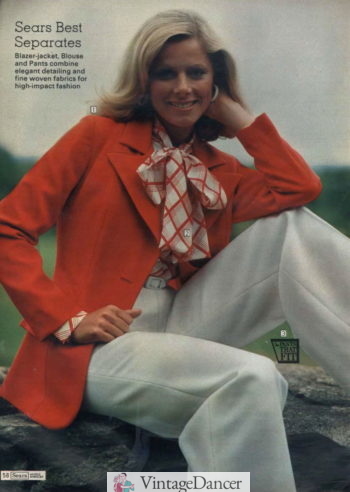
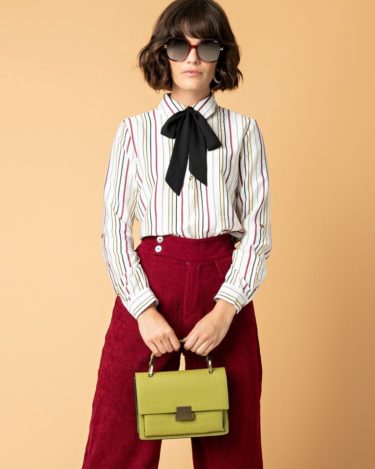
An equally crucial transformation in the perception of women in American society was also taking place at the time, leading to tremendous changes and leaving its noticeable trace in fashion and popular culture. Namely, with the rise in the popularity of the hippie movement in the 60s, the opportunity for elevating feminist ideals and the principles of gender equality emerged (Qudsia, 2020). Termed as the women liberation movement (WLM) and spawned from the key tenets of radical feminism, namely, its second wave, the WLM quickly gained traction within American society and affected how women across all classes perceived themselves (Nguyen, 2020). Although the described change occurred primarily among middle- and upper-class citizens, other female social groups also experienced a notable shift in how they were perceived within the community (Wiseman, 2019). For example, the concept of a working-class woman as a crucial part of the labor force was integrated into American collective consciousness effectively, even though the process of change was gradual (Yadav & Yadav, 2018). As a result, a transition from the image of a passive part of the patriarchal system toward an independent and emancipated woman was observed in the American community.
Therefore, the female identity altered significantly in the 60s and 70s compared to the rigid stereotype-based idea of a woman that was prevalent in the popular culture of previous decades. Although the process of women’s liberation was launched much earlier than the 60s, the lack of support and the absence of political and economic shifts that could facilitate active integration of women into the political, economic, and sociocultural life of the American community led to a halt in the development of change (Haring & Maierhofer, 2017). In turn, the ideas of equality and equity that originated in the 60s gave a powerful boost to the WLM, supporting women in their plight against sexism and for equity in all areas of life, including workplace, social interactions, and political involvement. Remarkable, returning to the representation of women’s image in media, one should note a significant drop in the extent of infantilization of women (see Fig. 13 and Fig. 14 for comparison)
In addition, when considering the impact of key political factors on the development of the female identity within American society, one must mention the general identity crisis observed across the U.S. community at the time. Due to the development of a tremendous political tension mentioned above, U.S. citizens experienced a social trauma, which manifested itself in a massive identity loss (Choi, 2018). Specifically, the challenge of traditional values that the promotion of liberal ideas encouraged by the hippie movement and leftist philosophy undermined the traditional perception of gender roles (Quinney, 2018). As a result, the preconceived notion of a traditional male and especially female role ad image quickly dissipated, being replaced by a new female identity rapidly (Haring & Maierhofer, 2017).
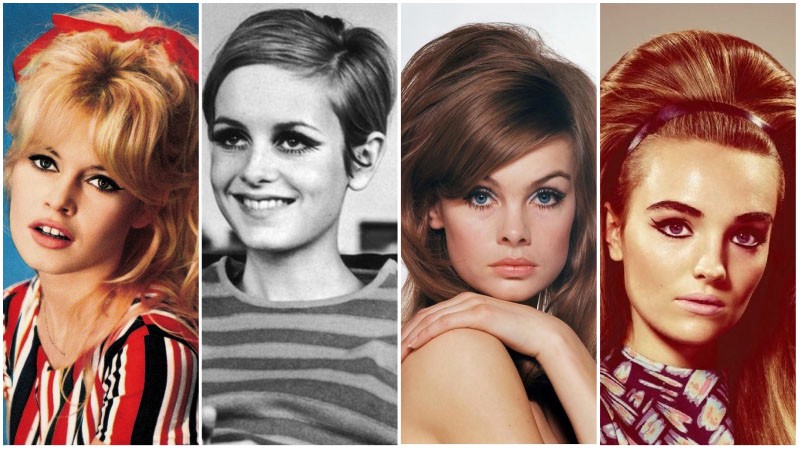
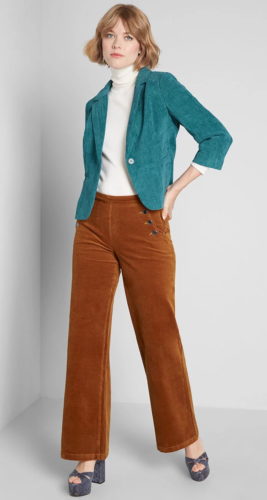
Finally, one must admit that the role of diversity began to amplify in the 70s, spurred by the increase in the power of the African American liberation movement. Gaining especially high influence in the 60s, the movement resulted in an increase of acceptance, which can also be seen in how women were represented in the media at the time. Specifically, the increase in the representation of African American women in fashion became the sign of significant social change (see Fig. 15).

Overall, the societal changes caused by the political and economic permutations within American society have affected female fashion and identity vastly by introducing a more relaxed attitude toward the global sociopolitical tension. As a result, the tendency for the fashion for both men and women to feature looser and brighter clothing items that challenged the acceptable traditions and, quite frequently, the taste of the audiences, quickly became dominant. Consequently, the hippie movement with its anti-war messages and the promotion of psychedelic experiences as the ostensible gateway to boosting social change and revolutionary political shifts defined changes in female fashion significantly.
As the cultural transformation of the society occurred and women started seeking emancipation opportunities, the trends toward female liberation and challenging gender normativity trickled their way into the fashion industry. As a result, while still leaning toward a clear distinction between male and female clothing, most designer choices focused on making clothes looser and less restrictive. Combined with the increasing role in the psychedelic experiences and the resulting acceptance of a wild color scheme, the alterations in female fashion became obvious. Moreover, the specified trends within the fashion industry defined future developments in female fashion. Remarkably, while most of the hippie-related ideas would have to face significant backlash in the 70s with the rise in neoconservativism, the concept of female liberation would only gain further traction along with the movement for social justice.
Finally, changes in female identity could be observed with the introduction of social changes inspired by the hippie movement as the response to the political confrontation of the era. Powered by the rapid increase in emancipation, the transformation of the female identity as the idea of an empowered woman and an independent, self-sufficient human being was finally settled in American society. Thus, massive political and social shifts in American culture set premises for changing the image of a woman as it was perceived in society.
References
Images
1960’s fashion [Photograph]. (2018). Medium.com. Web.
1960s pant suits- of the town! [Photograph]. (2018). Medium.com. Web.
1962 Evening Dress and Hostess Gown (Pants Underneath Skirt) [Photograph]. (2014). VintageDancer.com. Web.
1967 hip hugger pants [Photograph]. (2014). VintageDancer.com. Web.
1973 Casual with color [Photograph]. (n.d.). VintageDancer.com. Web.
1976 striped knit top, blue wide leg pants [Photograph]. (2018). VintageDancer.com. Web.
1976 the pantsuit look with wide leg trouser, bow blouse and blazer. [Photograph]. VintageDancer.com. Web.
1977 flare jeans with peasant tops [Photograph]. (n.d.). VintageDancer.com. Web.
A variety of sheath dresses worn with coordinated gloves and heels [Photograph]. (2014). VintageDancer.com. Web.
Brown cords, white turtleneck shirts and teal blazer. [Photograph]. (2018). VintageDancer.com. Web.
Hippies [Photograph]. (n.d.). Britannica,com. Web.
Stiped pussy-bow blouse and oversized sunglasses [Photograph]. (2018). VintageDancer.com. Web.
The Go-Go Boots [Photograph]. (2018). Medium.com. Web.
The popular hairstyles in the 1960’s. [Photograph]. (2018). Medium.com. Web.
Twiggy was the poster girl for the 1960s miniskirt [Photograph]. (n.d.). Contrado.co.uk. Web.
Journal Articles
Chinn, L. (2020). How the Mimeo-Magazine sounds in 1960s counterculture: The floating bear as sonic artifact. Journal for Literary and Intermedial Crossings, 5, 1-6.
Choi, S. (2018). Gender politics in early Cold War North Korea: National division, conscription, and militarized. Journal of Peace and Unification, 8(2), 1-27.
Duque, J. F. (2019). A map for countercultural art in the 1960s: Transcultural mobility and art history. Novecento transnazionale. Letterature, arti e culture/Transnational 20th Century. Literatures, Arts and Cultures, 3(2), 162-173.
Gooden, S. T., & Myers, S. L. (2018). The Kerner Commission report fifty years later: Revisiting the American dream. RSF: The Russell Sage Foundation Journal of the Social Sciences, 4(6), 1-17. Web.
Haring, N., & Maierhofer, R. (2017). The power of the female voice: US-American women protesting in the 1960s and 1970s. Springer.
Jony, A. J., Islam, M. A., & Tabassum, T. (2017). Influence of 1960’s hippie counterculture in contemporary fashion. International Journal of Textile and Fashion Technology (IJTFT), 7(4), pp. 11-20. Web.
McMillon, K. (2018). Black feminism, the ancestors speak, and the women of the Black Arts Movement. Journal of Pan African Studies, 11(6), 175-187.
Nguyen, D. (2020). Asian American Women in the academy: Multiple success case study of their leadership labyrinths and practices. American Journal of Qualitative Research, 4(3), 14-44.
Pöllath, M. (2018). Revisiting island decolonization: The pursuit of self-government in Pacific island polities under US hegemony. Island Studies Journal, 13(1), pp. 1-7. Web.
Qudsia, A. (2020). Intersectionality as an emerging discipline in the 21st Century Women Studies. South Asian Journal of Social Sciences and Humanities, 1(1), pp. 01-08.
Quinney, K. M. (2018). Teaching the history of the Cold War through the lens of immigration. The History Teacher, 51(4), 1-8.
Wiseman, M. S. (2019). Christabelle Sethna and Steve Hewitt, just watch us: RCMP surveillance of the women’s liberation movement in Cold War Canada. Labour: Journal of Canadian Labour Studies/Le Travail: revue d’Études Ouvrières Canadiennes, 83, pp. 270-272.
Yadav, M. S., & Yadav, M. K. (2018). Aspects of Feminist Writing: A Presentation of Common Issues. Journal of English Language Teaching and Linguistics, 3(1), pp. 57-68.